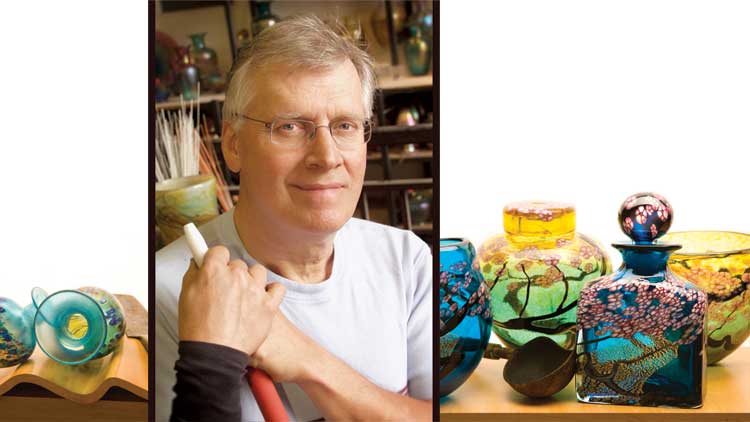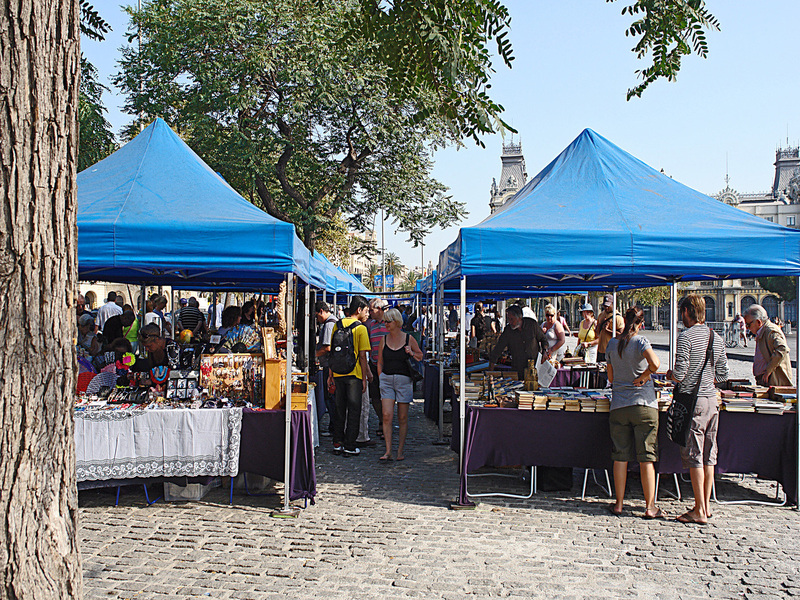by Nancy LaFever
I remember encouraging other fine craft artists to put up a website back in the ’90s. Mine had just gone live and I was feeling pretty cutting-edge and smart about it. Most artists would grumble back at me that their time was best spent in the creative part of the enterprise; they didn’t have time to “play” on the Internet. These days, not only do most artists and gallery owners have websites, they recognize how vital tools like blogs and social media can be to the survival and growth of their businesses. Internet-savvy artists also know the value of understanding how these interrelated Web applications can be maximized. What connectivity tools have they found to be most successful?
Refined websites
Blogs
Ceramic artist Sue Pariseau believes her blog facilitates interactive communication with customers interested in her functional stoneware. “Blogging allows you to share photos, explanations of your work, your processes and little bits of your life to make your work more personal. Additionally, I think participating in other blogs by guest authoring or commenting on posts helps drive traffic to mine. I also use a form on my blog to allow people to sign up for my mailing list, which helps grow my non-Internet business as well.”
Social media
Probably the single biggest Internet focus for artists recently has been to embrace the social media explosion. According to Facebook’s statistics page, there are over 500 million active users. That represents an incredible sales and marketing opportunity for artists and gallery owners who want to reach a target audience.
Laura Beth Love of Dishfunctional Designs is a mixed-media artist who makes contemporary jewelry from broken china. She uses her Facebook business page to give customers accessibility. “I post photos of both new and past (sold) designs on my page. Because I am so accessible, folks have no reservations posting comments or asking questions. Someone saw a photo and said, ‘Let me know if you ever make another one of those, because I want one!’ Within two days, I had created a few new pieces and the following morning, the person who left the comment purchased one of them.”
Videos
Glass artist Palenik gained exposure and added credibility to her creative process by demonstrating her work on HGTV’s “That’s Clever” and in a guest spot on NBC’s “Daytime Show.” Posting these videos on YouTube and as links on her website shows she’s knowledgeable in Web-savvy media applications.
Woodworker Grabski attributes a “leaked” YouTube video to increased traffic to his website and interest in his work. “The ‘bootleg’ video of the hidden drawer mechanism we leaked was never intended to get as much attention as it did. The main purpose of this video was to show my friend and co-designer, Mike Prom, the finished product in working condition. The video was initially uploaded to YouTube, and then I posted it to Facebook. The next day the video had 1,000 views. As of now, it has more than 20,000 views. People were blogging about the video and, more importantly, my business. It was a snowball effect that all began with the use of social media.”
Grabski plans to continue incorporating more videos into his site with testimonials. “We will be adding video of testimonials by real customers in front of their custom woodworking projects.”
Online storefronts
Part of the important evolution of artists’ and gallery owners’ websites has been to incorporate a gallery showcase or “storefront” aspect on the site. Online gallery owner Adrienne Crowther has a unique approach to the gallery/sales/promotion possibilities of her website. Shine On Brightly showcases memorial urns, glass, paintings, books and jewelry by 25 artists and craftspeople. Calling herself a “memorial curator,” Crowther understands the essential, tricky balance between featuring fine craft/artwork and promoting sales. “First, I formulated my brand and mission. Since Shine On Brightly offers memorial art to people who are experiencing a loss, I wanted the website experience to be beautiful and reverent. I spent a lot of money on quality photography and design, as well as customized programming for the e-commerce feature. The focus was strong on the aesthetics, so I’ve had to go back and tweak some of the copy and URLs for search-engine friendliness.”
Mixed-media artist Love’s first online storefront experience was on eBay. “I was soon an eBay power-seller with a national customer base and many repeat customers (they knew where to find me!).” She then branched out to Etsy. Although Love has a website, buyers are immediately linked to her Etsy store when they click on an item. Also utilizing her blog and social media, Love values the immediate feedback she receives from customers. “As a craftswoman, I consider myself and my work in constant evolution. Input from customers helps me grow more steadily and helps me keep current with the wants and needs of those customers.”
Connectivity and community
A critical aspect of Internet utilization that many artists and shop owners mention is their need to stay connected, not just to customers, but to others in the industry. Using professional forums or informal platforms like Twitter allows them to offer each other support, information, networking and a sense of community. Shine On Brightly’s Crowther maintains and strengthens relationships through social media. “I’ve met people in the funeral industry at conferences with whom I’ve connected through Twitter, Facebook or blogging. So when I meet them in person, we’ve already cut through a lot of introductory exchanges. In many instances, we’ve already done business together.”
So if you, unlike the artists and gallery owners above, aren’t utilizing the Internet tools that could enhance and expand your business, it may be time to give it your focus.
This article was published in the October 2010 issue of The Crafts Report.







